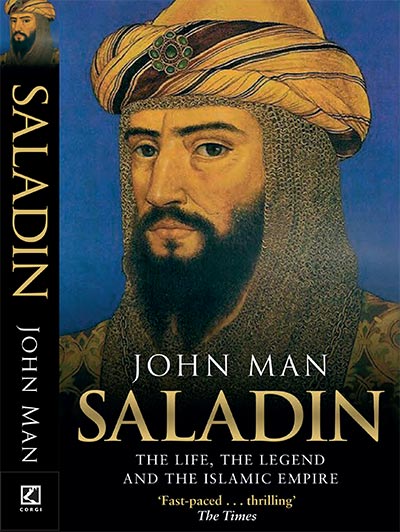New look at an Arab hero
Updated: 2016-02-24 07:31
By Andrew Moody(China Daily)
|
||||||||
 |
|
[Photo provided to China Daily] |
"This is largely because Damascus was Saladin's base and that is where his grave is and also a major statue of him. The Assads look back to Saladin and, of course, as everyone is hoping and looking for the next leader who can unite Sunnis and Shias."
Saladin lived at a time when the Silk Road provided major trade links between the Islamic world and China.
"This was a time when Islam and the Chinese were probably the leading civilizations in the world. Islam at the time was very outgoing and tolerant," he says.
Man, who read modern languages at Oxford before taking a separate degree in Mongolian at the School of Oriental and African Studies in London, began his career as a journalist with Reuters in Bonn in the late 1960s.
He then moved into publishing before becoming a full-time author in 1983. He has produced 18 books (14 of which are still in print), including several on China covering subjects as diverse as the Terracotta Warriors, the Great Wall and Marco Polo. His biography of Genghis Khan has sold 200,000 copies alone and has been translated into 21 languages.
The Mongol leader has had something of a historical makeover with a more nuanced image emerging than that of just a brutal military leader. Man was an adviser on Sergei Bodrov's 2007 Oscar-nominated film Mongol.
"For his victims the older image was certainly a reality. He was responsible for many millions of deaths in China and in the Islamic world but he was at the same time a brilliant leader."
Man insists that the Mongol leader also didn't habitually boil people as a form of capital punishment.

 Matters of state
Matters of state
 Students begin new term with lucky bags and red envelopes
Students begin new term with lucky bags and red envelopes
 The life of a postpartum care worker
The life of a postpartum care worker
 Top 10 most Internet-savvy banks in China
Top 10 most Internet-savvy banks in China
 To eat or not to eat? Delicious and adorable art
To eat or not to eat? Delicious and adorable art
 12 photos you don't want to miss about Chinese Lantern Festival
12 photos you don't want to miss about Chinese Lantern Festival
 The world in photos: Feb 15 - 21
The world in photos: Feb 15 - 21
 China Daily weekly pictures: Feb 13-19
China Daily weekly pictures: Feb 13-19
Most Viewed
Editor's Picks

|

|

|

|

|

|
Today's Top News
What ends Jeb Bush's White House hopes
Investigation for Nicolas's campaign
Will US-ASEAN meeting be good for region?
Accentuate the positive in Sino-US relations
Dangerous games on peninsula will have no winner
National Art Museum showing 400 puppets in new exhibition
Finest Chinese porcelains expected to fetch over $28 million
Monkey portraits by Chinese ink painting masters
US Weekly

|

|







